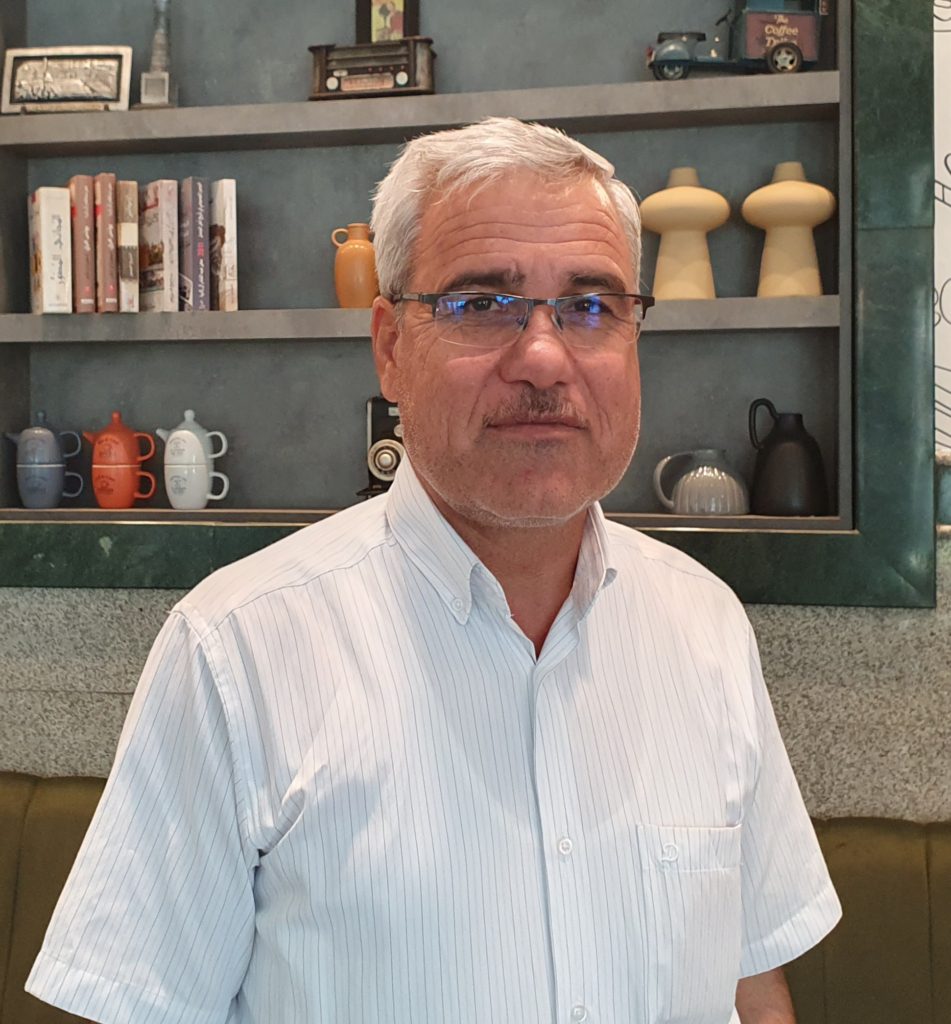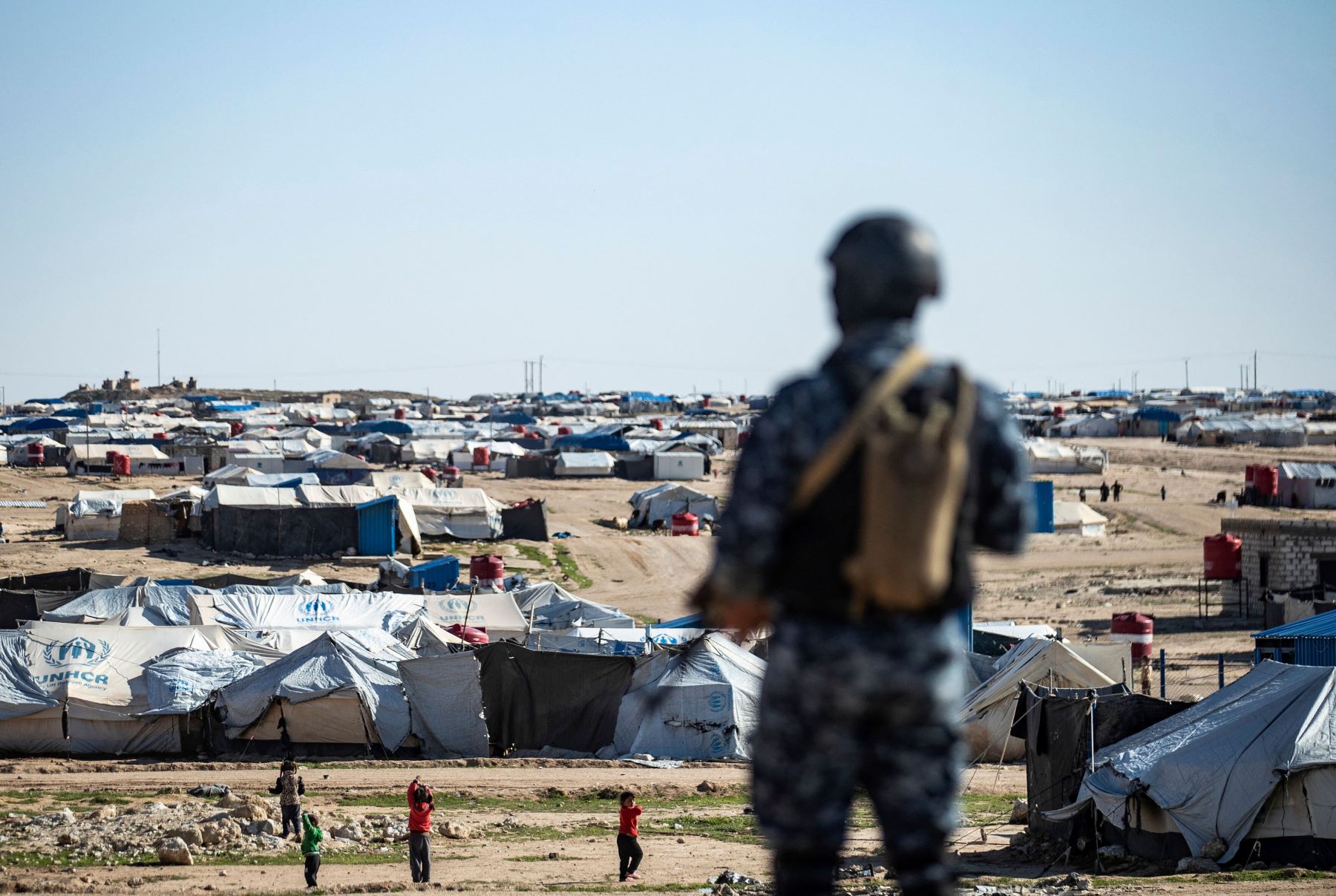Thousands of Yezidi survivors of atrocities by the Islamic State armed group (IS) remain missing, including likely hundreds indefinitely detained in north-east Syria, Amnesty International said ahead of the 10-year anniversary of IS’s attack on the Yezidi community in Iraq.
- Yezidis still suffering violations, 10 years after Islamic State attack
- Hundreds believed indefinitely detained in north-east Syria
- “You must save those who are still in captivity” – Hanifa Abbas, whose sister remains missing
Beginning in August 2014, IS carried out a targeted attack on the Yezidi community in Iraq, which the UN has recognized as a genocide. More than 3,000 Yezidi men, women and children were unlawfully killed, and at least 6,800 more – primarily women and children – were abducted by IS. IS perpetrated a catalogue of horrific violations against Yezidis, subjecting women and girls to sexual and other forms of slavery, and forcing boys to fight as child soldiers.
Following the territorial defeat of IS in March 2019, an estimated 2,600 Yezidis remain missing, according to the Office for Kidnapped Yezidis in Dohuk. A significant proportion are believed to be in north-east Syria after being abducted and transported there by IS. Amnesty International interviewed Yezidi rights organizations and activists who estimate there are large numbers of Yezidis caught up in the sprawling system of detention established to hold people with perceived IS affiliation in north-east Syria. This system is run by the Autonomous Administration of the North and East Syria Region (autonomous authorities), with the support of the US-led military coalition established to defeat IS.
Ten years after IS first launched its attack against the Yezidis, their suffering continues today, as thousands remain missing
Lauren Aarons, Senior Adviser on Gender, Conflict and International Justice
“The Yezidi community suffered unthinkable harm at the hands of Islamic State. Ten years after IS first launched its attack against the Yezidis, their suffering continues today, as thousands remain missing,” said Lauren Aarons, Amnesty International’s Senior Adviser on Gender, Conflict and International Justice.
“Many Yezidis who were mistakenly swept up following the collapse of IS have been languishing in indefinite detention in dire and life-threatening conditions in north-east Syria. These Yezidis must now be identified, freed and provided with the ongoing support they need.”
Hundreds of Yezidi women and children are believed to be in Al-Hol detention camp, with some remaining trapped in conditions of captivity, slavery and other abuse by IS affiliates. An unknown number of Yezidi boys and young men abducted as boys are also believed to be held in a connected network of at least 27 detention facilities.
While those held in the detention facilities and Al-Hol camp who have come forward and identified themselves as Yezidi have been freed and repatriated to Iraq, Yezidi rights organizations and recently repatriated Yezidis say there remain many barriers for Yezidis who remain in detention to come forward. Some are too afraid, fearing they will be punished or killed by people affiliated with IS in the detention facilities and Al-Hol camp if they attempt to return to their families. Some were told by IS that their families would harm them, or believe that all members of the Yezidi community have been killed. Many were too young when they were abducted to now remember they are Yezidi.
Amnesty International interviewed four Yezidi women and children who had recently been identified in the detention system, five family members, and 13 members of Yezidi rights organizations and activists. Amnesty International also spoke with three members of the autonomous authorities, and to 12 UN and humanitarian NGO staff members. These interviews were conducted in north-east Syria and Iraq between September 2022 and July 2024, as well as remotely.
‘They treated me like a slave’
The dire conditions in Al-Hol camp amount to cruel, inhuman or degrading treatment. All people detained in Al-Hol are being held by the autonomous authorities indefinitely without charge or trial, the vast majority for more than five years, in violation of international law. The autonomous authorities told Amnesty International they do not have full control of Al-Hol, and that IS has regrouped in the camp.
Nahla*, a Yezidi girl who was repatriated to Iraq, told Amnesty International she was brought to Al-Hol with the family of her last captor, a family affiliated with IS: “The family I lived with in Al-Hol made me care for their animals. They treated me like a slave.”
Nahla’s mother Nufa* told Amnesty International that the search for her daughter was fraught, and that Nahla struggled to identify as Yezidi before they were reunited: “She couldn’t remember if she is Yezidi or not… She forgot most things.”
Sana* was aged 16 when captured by IS, and repatriated from Al-Hol after being identified during a security operation by the autonomous authorities. She told Amnesty International that she hid her Yezidi identity for years due to fear, explaining that before the defeat of IS, one of her captors showed her a video that he said showed a so-called “honour” killing of a Yezidi girl returning from captivity and told her there was no way her community would want her back. Fearing she would also be killed if she returned to Iraq, she hid inside the camp.
She said: “I wanted to come forward, but I was worried my family wouldn’t accept me… I’d tear up my tent and move it often, I was always moving, I didn’t want to get to know anyone, or for them to get to know me. Sometimes, I’d wonder if I should reveal myself, then I would think of the video.”

A further barrier is that many of the remaining Yezidi women and girls in Al-Hol have young children as a result of sexual violence by IS members. Some of these women have well-founded fears that they could be forcibly separated from their children, in violation of international human rights law, if they are identified and repatriated. In 2020, Amnesty International documented a pattern of Yezidi women being separated from their children after being identified in Al-Hol. Yezidi women continue to be at risk of being separated from children born as a result of sexual violence.
Hanifa Abbas told Amnesty International she spent years looking for her five sisters who were abducted by IS. She managed to bring four of her sisters back home, and identified her fifth sister from photographs collected by a Yezidi activist in Al-Hol. However, Hanifa’s sister has not identified herself to camp authorities as Yezidi.
Hanifa believes her sister may have children in the camp and fears she will be separated from them if she identifies herself as Yezidi. She told Amnesty International: “So many women, if they knew they had the option to stay with their children, they would come forward.”
Hanifa called for more support from the international community, and said: “I am very strong, but I am collapsing now. It has been 10 years… You must save those who are still in captivity.”
Amani*, a Yezidi woman returned to Iraq from Al Hol, told Amnesty International that she was forced to separate from her children, who are now in north-east Syria: “Everyone says they are IS children… I have some of their clothes, and I take them out and smell them. Of course I want to be with them. They are a part of my heart.”
‘Nobody ever came to ask if I was Yezidi’
Amnesty International documented systematic torture or other ill-treatment in the detention facilities in north-east Syria, and found that in at least two of the facilities, hundreds of men and boys have died due to torture and grossly inhumane conditions.
Basim* was held in Panorama detention facility and came forward as a Yezidi in 2022. Now aged 18 and back in Iraq, he said that during his time in Panorama and other detention facilities, he witnessed dozens of men dying due to torture or other ill-treatment and rampant disease.
He told Amnesty International: “I am 100% sure there are other Yezidi boys and young men in the prisons. They fear speaking out, because the other prisoners could hurt them. Nobody ever came to ask if I was Yezidi. If anyone had asked, I would have gone in the first minute… Now is the time to check for the Yezidis, while there is still a chance to find them.”
Lack of identification system and limited access
Yezidi rights organizations and activists have been working with the autonomous authorities to identify Yezidis remaining in detention in north-east Syria, coordinating between families and security forces, and in some cases collecting their own intelligence from inside Al-Hol.
Several Yezidi rights organizations and activists said they had good relationships with the autonomous authorities, though these relationships are based on personal contacts. There is currently no system or organized way to engage with the authorities about missing Yezidis.

Abdullah Shrem, a Yezidi activist who has spent the last 10 years working to identify missing Yezidis, told Amnesty International: “Islamic State is gone, but we still have so many people in captivity. We feel totally ignored by the international community.”
Another Yezidi activist told Amnesty International he had a list of nine names of Yezidi boys and young men he believed to be in the Panorama detention facility, but had no way of liaising with the authorities to secure their release.
“Yezidi activists and family members should not be left on their own to search for missing Yezidis. There is an urgent need for increased international support for all human rights-compliant efforts to identify and return missing Yezidis, including those abandoned and forgotten in detention facilities and Al-Hol camp in north-east Syria,” said Nicolette Waldman, Senior Crisis Adviser at Amnesty International.
“The human rights and agency of the survivors must be at the centre of these efforts. The Iraqi authorities should provide increased assistance and support for all those returning, including access to reparations under the Yazidi Survivors Law.”
Yezidi activists and family members should not be left on their own to search for missing Yezidis
Nicolette Waldman, Senior Crisis Adviser at Amnesty International
The autonomous authorities must also ensure Yezidi rights organizations and other relevant organizations working in a human rights-compliant manner have access to detention facilities and Al-Hol camp. The Iraqi authorities should also give relevant organizations access to Jeddah 1 camp, where Iraqis from Al-Hol are first returned to Iraq, and initiate efforts to identify Yezidis among returning Iraqis.
Other states, particularly the US and UK governments, should provide support for all initiatives to identify missing Yezidis that honour survivors’ rights and agency, and UN agencies such as the UNHCR, UNICEF, UN Women and the Independent Institution for the Missing in Syria should dramatically scale up their efforts on behalf of missing Yezidis. Donors should also consider supporting access to DNA testing to identify Yezidis or people from other minority communities who were abducted as children.
Note: *Names have been changed.
Header image: Special forces of the Syrian Democratic Forces keep watch on March 30, 2021 in the vicinity of al-Hol camp, the larger of two Kurdish-run displacement camps for relatives of Islamic State jihadists in Syria’s northeast. Photo by DELIL SOULEIMAN/AFP via Getty Images.






















